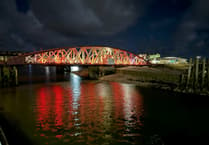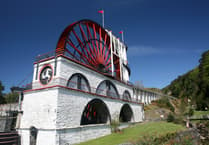The history of the Manx Aviation and Military Museum is being commemorated.
Last week marked 80 years since the Battle of El Alamein, the turning point of the Second World War when allied armies began to push back the axis forces in the North African desert.
It also marked the end of an era for the Manx Regiment.
There is a display at the museum where people can learn more about the Manx Regiment’s involvement in the battle.
Many Manxmen took part in the Battle of El Alamein as infantrymen and tank troops in addition to those in the Royal Navy and the Royal Air Force, but there was one army unit in the battle which had a special link to the island.
This was the 15th Light Anti-aircraft Regiment, Royal Artillery, better known as the Manx Regiment which had first fired its guns on the day that war was declared on September 3, 1939.
The regiment defended the south coast of England during the Battle of Britain and by the war’s end it had fought in North Africa, Eritrea, Crete, Italy, and north-west Europe.
In October 1942 the regiment was part of the 7th Armoured Division under General Montgomery.
Its role was initially to defend the British field guns from enemy air attack and later to protect the allied armour, which was making its way through newly-cleared tracks in the enemy’s extensive minefields.
The regiment is believed to be the highest-scoring anti-aircraft unit of the British Army but 80 of its men were lost during the war.
In October 1946, the Old Comrades Association was formed and regular meetings were held for many years.
The association opened its own museum at the Drill Hall in Tromode in 1986 so that the regiment’s story could be told.
The museum was moved to Ronaldsway 20 years later to become an important part of the Manx Aviation and Military Museum, where every year over 7,000 visitors can learn about the regiment.
Following the death in April of John Stevenson, who was the last surviving member of the regiment, the trustees of the Old Comrades Association decided to hand over the association’s flag to the museum on El Alamein Day.
The flag has flown regularly at St John’s on Tynwald Day but in more recent years it covered the coffins of the regiment’s men.
Ivor Ramsden, director of the museum, said: ‘On this special day it is an honour to accept the OCA flag which will be displayed along with the hundreds of other objects and photographs in our Manx Regiment gallery.
‘It completes the story because we chart in detail the actions of the regiment from its inception in 1938 through to the end of the war and beyond, and this is in effect the final page of the book.
‘It’s a book which will never close because future generations can continue to visit the museum and learn about what their family members did during the long war years from 1939 to 1945.’
The museum is open from 10am to 4.30pm every weekend throughout the winter.




